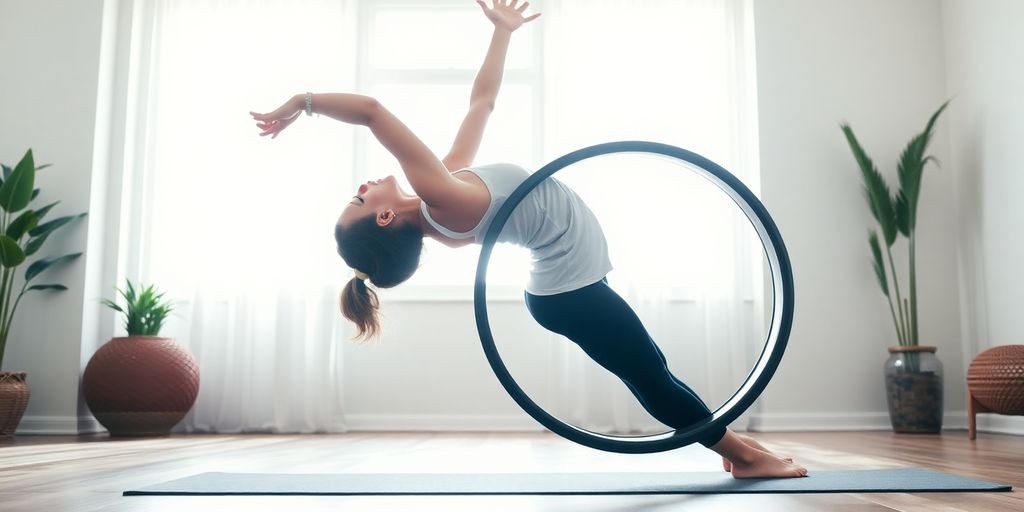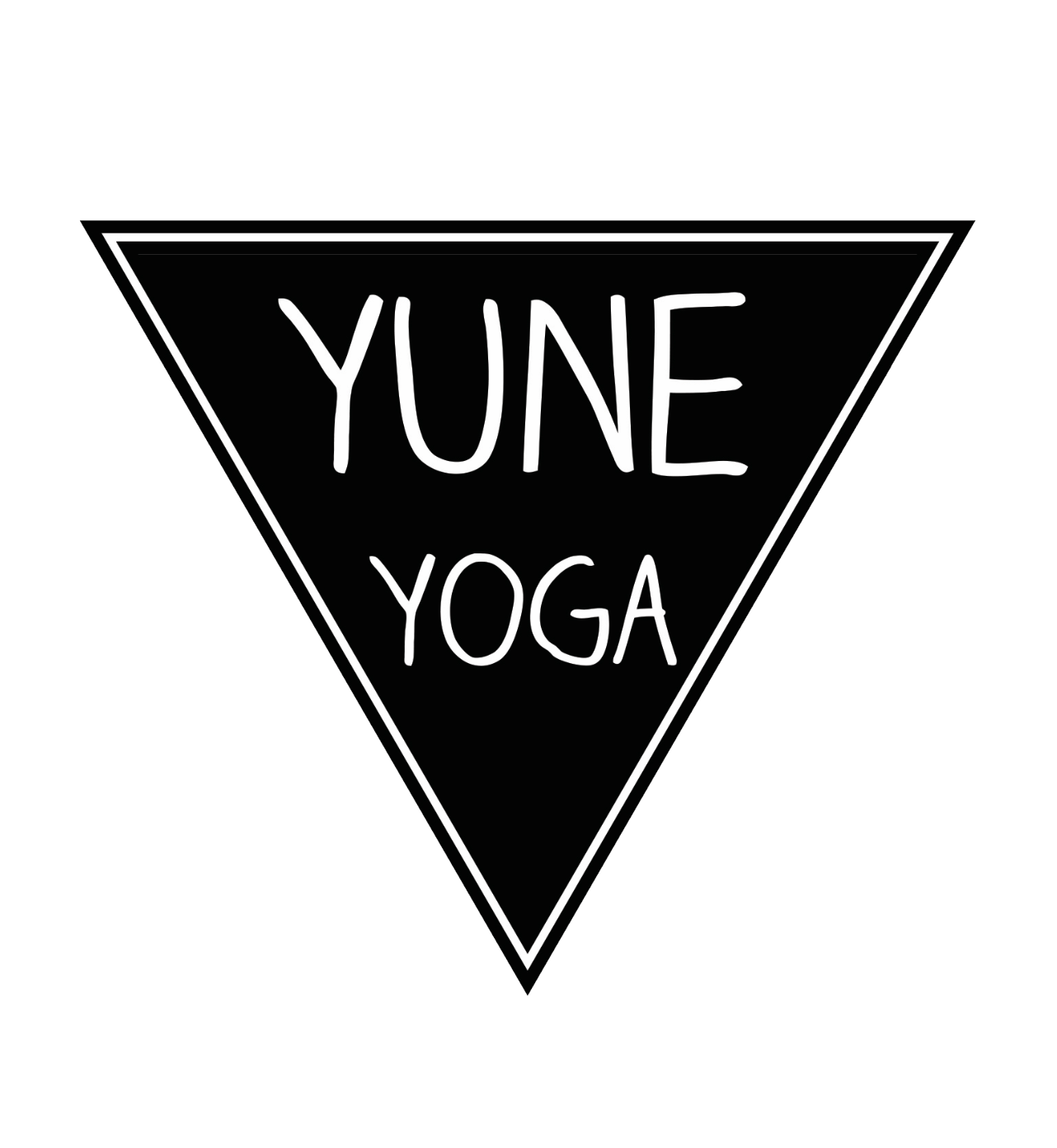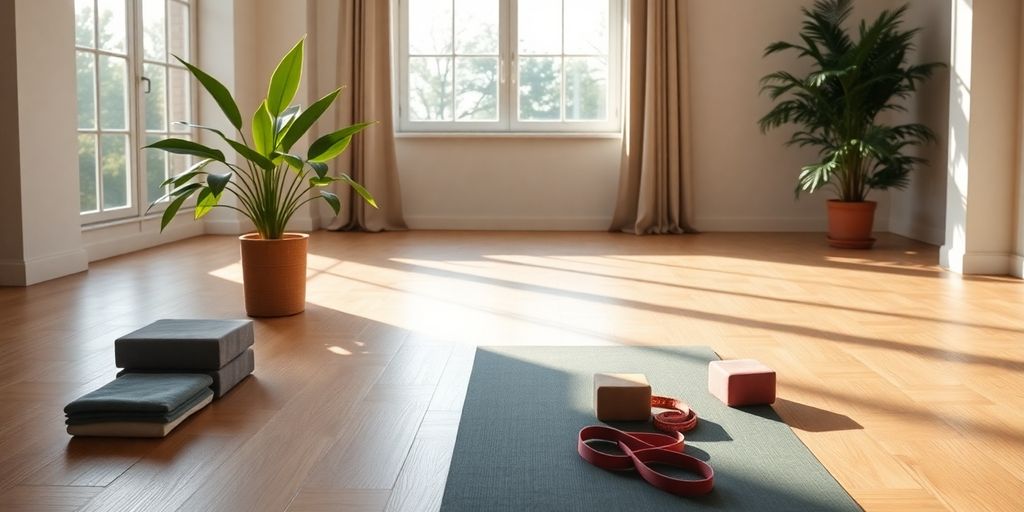
Unlocking Your Flexibility: How the Yoga Wheel Transforms Your Practice
The yoga wheel has become a popular tool in the fitness and yoga world, offering a unique way to improve flexibility, balance, and relieve tension. This simple yet effective prop can help you deepen your stretches, enhance your posture, and add a new dimension to your practice. Whether you're just starting out or are a seasoned practitioner, the yoga wheel can transform how you approach your workouts and leave you feeling rejuvenated.
Key Takeaways
- The yoga wheel helps increase flexibility and range of motion by allowing deeper stretches.
- It improves balance and core strength, making poses more stable and controlled.
- Using the wheel can enhance your posture and alignment during various poses.
- Incorporating the wheel into your practice can add fun and variety to your routine.
- It's also a great tool for self-care, providing deep tissue massage and relaxation.
The Yoga Wheel: An Overview
Understanding the Design and Functionality
Okay, so what is a yoga wheel? It's basically a hollow, circular prop, usually made of plastic, wood, or sometimes even cork. They come in different sizes, but most are around 10-13 inches in diameter. The main idea is that it helps you open up your back, chest, and shoulders, and it can also assist with balance and flexibility. It's not just for advanced yogis either; beginners can totally use it to modify poses and get a better feel for certain stretches. I remember the first time I saw one, I thought it looked kind of intimidating, but it's actually pretty user-friendly once you get the hang of it.
Different Sizes and Materials
Yoga wheels aren't a one-size-fits-all kind of thing. You've got different diameters, widths, and materials to choose from. Smaller wheels are great for targeting specific areas, like your back muscles, while larger ones offer more support for backbends. Material-wise, plastic wheels are usually the most affordable and easiest to clean. Wood wheels have a more natural feel, and cork wheels are grippy and eco-friendly. Here's a quick rundown:
| Size | Best For |
|---|---|
| Small (10") | Targeted back massage, portability |
| Medium (12") | General use, most body types |
| Large (13") | Deeper backbends, taller individuals |
Choosing the right size and material really depends on your body type, flexibility level, and what you want to get out of your practice. Don't be afraid to try out a few different ones before settling on one.
How It Enhances Your Practice
So, how does this thing actually make your yoga better? Well, for starters, it can help you relieve back pain by gently stretching your spine. It also allows you to go deeper into poses that might normally be difficult, like backbends or chest openers. Plus, it can improve your balance and core strength, since you have to engage those muscles to stay stable on the wheel. Here are some ways it can help:
- Deeper stretches
- Improved balance
- Increased flexibility
- Core strengthening
Benefits of Using a Yoga Wheel

Increased Flexibility and Range of Motion
One of the biggest reasons people start using a yoga wheel is to get more flexible. It helps you stretch deeper than you might be able to on your own. Think of it as a support that lets you ease into poses, targeting those tight spots. I've found it especially helpful for my back and shoulders, areas where I always feel stiff. By using the yoga wheel regularly, you can slowly increase your flexibility and range of motion, making those previously difficult poses feel a lot more accessible.
Improved Balance and Core Strength
The yoga wheel isn't just about stretching; it's also a great tool for improving your balance and core strength. When you use the wheel, your body has to work harder to stay stable. This means your core muscles are constantly engaged, helping you build strength and stability. It's kind of like doing a balance beam, but for yoga! I've noticed a big difference in my core strength since I started incorporating the wheel into my practice. It's made balancing poses much easier and has improved my overall stability.
Enhanced Posture and Alignment
Using a yoga wheel can also help improve your posture and alignment. The wheel provides support and feedback, helping you understand how your body should be positioned in different poses. This awareness can translate into better posture in your daily life. I used to slouch a lot, but since using the wheel, I've become more conscious of my posture and alignment. It's helped me stand taller and feel more confident.
The yoga wheel can be a game-changer for your practice. It's not just about doing fancy poses; it's about improving your flexibility, balance, and overall well-being. Give it a try and see how it can transform your yoga journey.
Incorporating a Yoga Wheel into Your Practice
Starting with Basic Poses
When you're just getting started with a yoga wheel, it's best to ease into things. Don't jump straight into advanced poses; instead, begin with some familiar, foundational poses. This will help you get a feel for how the wheel interacts with your body and build confidence. Think of it as getting to know a new friend – you wouldn't immediately ask them to help you move furniture, right?
Here are a few poses to start with:
- Supported Child's Pose: Place the wheel under your chest or thighs for added support and a deeper stretch.
- Supported Bridge Pose: Position the wheel under your lower back to open up your chest and shoulders.
- Gentle Backbends: Slowly roll your spine over the wheel, being mindful of any discomfort. This can be a great way to release tension in your back.
Deepening Your Stretches
Once you're comfortable with the basics, you can start using the yoga wheel to deepen your stretches. The wheel can help you access a greater range of motion and target muscles that might be difficult to reach otherwise. It's like having a personal assistant who gently guides you further into each pose. Remember to listen to your body and never force anything.
It's important to focus on your breath as you deepen your stretches. Inhale as you prepare for the stretch, and exhale as you move further into the pose. This will help you relax and avoid injury.
Consider these poses:
- Camel Pose: Use the wheel to support your back as you arch backward, allowing for a deeper opening in your chest and shoulders. This can really help with shoulder flexibility.
- Pigeon Pose: Place the wheel under your hip for added support and a more intense stretch in your hip flexors.
- Standing Forward Fold: Rest your hands on the wheel to lengthen your spine and deepen the stretch in your hamstrings.
Challenging Your Balance
Ready for a challenge? The yoga wheel can also be used to improve your balance and core strength. By incorporating the wheel into standing poses, you'll be forced to engage your core muscles and find your center of gravity. It's like walking a tightrope – it requires focus, control, and a little bit of courage. Don't be discouraged if you wobble or fall at first; it's all part of the process.
Try these poses to test your balance:
- Warrior III: Use the wheel as a support for your hands as you extend one leg back, challenging your balance and core stability. This is a great way to improve your core strength.
- Half Moon Pose: Place one hand on the wheel for support as you balance on one leg, opening up your hips and chest.
- Standing Splits: Use the wheel to support your hands as you work towards a deeper split, improving your flexibility and balance.
Tips for Maximizing Your Yoga Wheel Experience
Experimenting with Different Poses
Don't be afraid to try new things! The yoga wheel isn't just for backbends; it can be used in a ton of different poses to deepen stretches and add a new dimension to your practice. Try using it in seated forward folds to get a deeper hamstring stretch, or in lunges to challenge your balance. The possibilities are pretty much endless, so have fun exploring.
- Try using the wheel under your hips in bridge pose for extra support.
- Experiment with placing the wheel between your ankles in one-legged bridge variations.
- Use the wheel to support your arm in a deep side stretch.
Using the Wheel for Support
One of the best things about a yoga wheel is that it can provide support in poses where you might otherwise struggle. This is especially helpful if you're new to yoga or have limited flexibility. For example, if you're working on backbends, the wheel can help you gradually open up your chest and spine without overdoing it. It's like having a spotter in the gym, but for yoga!
Integrating into Sequences
Once you're comfortable with using the yoga wheel in individual poses, try incorporating it into your regular yoga sequences. This can add a fun and challenging element to your practice, and it can also help you to improve balance and coordination. Think about how you can use the wheel to transition between poses, or to add a little extra oomph to your vinyasa flows.
Using a yoga wheel for gentle stretches and massages can relieve some individuals with back pain. It can also be a valuable tool for transitioning between poses and enhancing the overall flow of your practice. It's a versatile prop that can add excitement and variety to your practice. Have fun exploring new poses and sequences. Remember to use a 10mm yoga mat for extra support.
Common Mistakes to Avoid with a Yoga Wheel

Overextending in Poses
One of the biggest mistakes people make with a yoga wheel is pushing themselves too far, too fast. It's easy to get excited about the increased range of motion, but overextending can lead to muscle strains or even more serious injuries. Listen to your body. If you feel pain, back off. It's better to progress slowly and safely than to end up sidelined.
Neglecting Proper Alignment
Using a yoga wheel without paying attention to alignment is like driving a car without knowing the rules of the road – you're asking for trouble. The wheel can actually exacerbate poor alignment if you're not careful. Make sure you understand the correct form for each pose before adding the wheel. If you're unsure, work with a qualified instructor who can guide you. Think about engaging your core and keeping your spine straight. Proper alignment is key to getting the most out of the wheel and avoiding injury. Using a yoga wheel can be a great tool, but only if you use it correctly.
Skipping Warm-ups
Jumping straight into deep stretches with a yoga wheel without warming up is a recipe for disaster. Your muscles need to be prepared for the increased intensity. A good warm-up should include some light cardio, like jumping jacks or jogging in place, followed by dynamic stretches, such as arm circles and leg swings. This will increase blood flow to your muscles and make them more pliable, reducing the risk of injury. Don't underestimate the importance of a simple yoga routine before using the wheel.
It's tempting to skip the warm-up when you're short on time, but it's not worth the risk. A few minutes of preparation can save you weeks of recovery from an injury.
Here's a quick warm-up routine you can try:
- 5 minutes of light cardio
- 10 arm circles forward and backward
- 10 leg swings forward and backward
- 5 cat-cow stretches
Exploring Advanced Techniques with the Yoga Wheel
Inversions and Advanced Poses
Ready to take things up a notch? The yoga wheel can be a game-changer for inversions. It provides support and stability, allowing you to explore poses like headstands and forearm stands with more confidence. It's not just about getting upside down, though. The wheel can also help you deepen advanced backbends and other challenging asanas. Just remember to build up to these gradually and always listen to your body. Don't rush into anything that feels unsafe or uncomfortable.
Dynamic Movements for Strength
Think the yoga wheel is just for stretching? Think again! You can use it to build serious strength with dynamic movements. Try incorporating the wheel into your plank variations, or use it to add resistance to your core work. The instability of the wheel forces your muscles to work harder to maintain control, leading to increased strength and stability. It's a fun and effective way to challenge yourself and improve core strength.
Creative Flow Sequences
Once you're comfortable with the basics, it's time to get creative! The yoga wheel opens up a whole new world of possibilities for flow sequences. You can use it to transition between poses in unique and interesting ways, adding a new dimension to your practice. Experiment with different movements and see what feels good. Don't be afraid to try new things and have fun with it! Here are some ideas to get you started:
- Wheel-assisted sun salutations
- Flowing from plank to downward dog using the wheel under your feet
- Integrating backbends and forward folds with the wheel for spinal mobility
Remember, the key is to listen to your body and modify as needed. The yoga wheel is a tool to support your practice, not to push you beyond your limits. Always prioritize safety and proper alignment.
The Yoga Wheel as a Self-Care Tool
Using the Wheel for Deep Tissue Massage
Okay, so the yoga wheel isn't just for fancy poses. It's actually pretty awesome for self-massage. Think of it like a foam roller, but rounder and maybe a bit more intense. I've been using mine to work out knots in my back and shoulders, and it's been a game-changer. Rolling the yoga wheel along your spine can really release tension.
- Target specific muscle groups.
- Control the pressure by adjusting your body weight.
- Breathe deeply to enhance relaxation.
I found that using the wheel before bed helps me unwind. The gentle pressure really seems to calm my muscles and quiet my mind. It's become a regular part of my evening routine.
Incorporating Mindfulness Practices
I've started using my yoga wheel as a way to bring more mindfulness into my day. It's not just about the physical stretches; it's about being present in the moment. I'll often just sit with the wheel, focusing on my breath and how my body feels. It's a simple way to ground myself when I'm feeling stressed or overwhelmed. You can try this too:
- Focus on your breath as you move with the wheel.
- Pay attention to the sensations in your body.
- Let go of distractions and be present.
Creating a Relaxation Routine
I've created a whole relaxation routine around my yoga wheel. It's become my go-to for unwinding after a long day. I usually start with some gentle stretches, focusing on releasing tension in my neck, shoulders, and back. Then, I'll move into some more restorative poses, using the wheel for support. It's like a mini-spa session at home. Here's what my routine looks like:
- Gentle backbends over the wheel.
- Supported chest openers.
- Legs-up-the-wheel pose for circulation.
Wrapping It Up: Embrace the Yoga Wheel
So, there you have it. The yoga wheel is more than just a trendy prop; it’s a game changer for your practice. Whether you’re looking to stretch deeper, improve your balance, or just add some fun to your routine, this tool can help. It’s all about finding what works for you and making your practice enjoyable. So why not give it a shot? You might just find that the yoga wheel opens up new possibilities in your yoga journey. Happy rolling!
Frequently Asked Questions
What is a yoga wheel used for?
A yoga wheel is used to help improve flexibility, balance, and strength in yoga poses. It makes it easier to stretch and can also support your body during different exercises.
Is the yoga wheel good for beginners?
Yes! The yoga wheel is great for beginners. It helps you learn poses and can make stretching easier.
How do I clean my yoga wheel?
To clean your yoga wheel, just wipe it down with a damp cloth and some mild soap. Make sure it dries completely before using it again.
Can using a yoga wheel help with back pain?
Yes, using a yoga wheel can help relieve back pain by providing gentle stretches and massages to your back.
How do I start using a yoga wheel?
You can start using a yoga wheel by trying simple poses like Child's Pose or Downward Dog. It’s best to take it slow and get comfortable with the wheel.
Can I use a yoga wheel for advanced poses?
Absolutely! The yoga wheel can also be used for more advanced poses to help improve your balance and strength.

